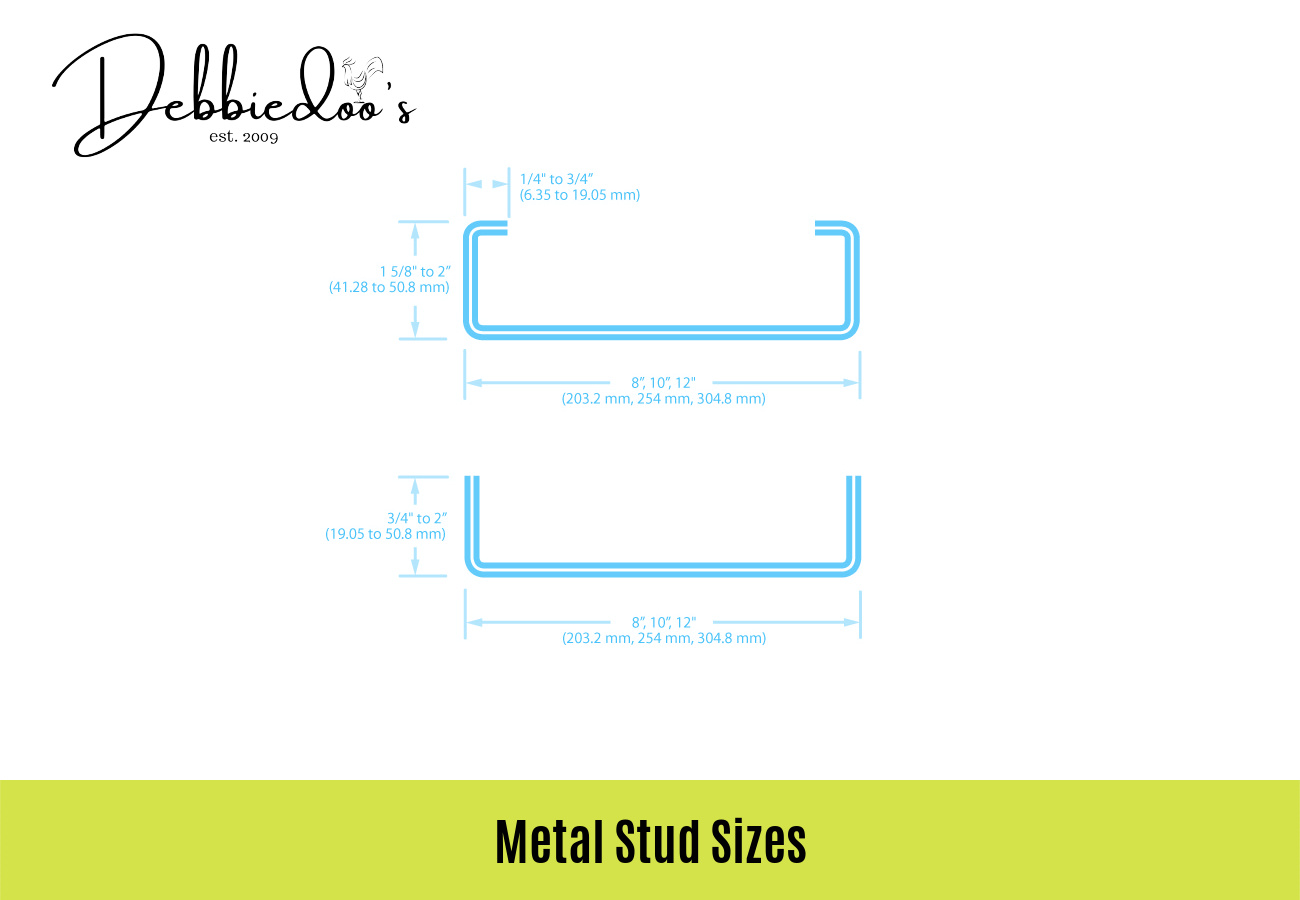Metal studs are the backbone of a building’s structure. They are long, flat pieces of steel used to create frames for interior walls and ceilings. In turn, the frames provide support for attaching interior and exterior wall coverings, such as drywall or brick. Many metal stud sizes are available, which we explore in this article.

Standard metal stud sizes
The steel framing thickness, expressed in gauges, determines the strength of metal studs. The smaller the gauge number, the thicker the metal. For instance, 26-gauge studs are thinner than 14-gauge studs. So you’ll need thicker (lower gauge) studs for walls that must hold more weight.
Here are measurements of steel framing thickness for standard metal stud sizes, listed in gauges, mils (1/1000 of an inch), and millimeters.
| Standard metal stud | Mils | Millimeters |
| 26 gauge | 0.551 | 0.014 |
| 24 gauge | 0.701 | 0.018 |
| 22 gauge | 0.853 | 0.022 |
| 20 gauge | 1.006 | 0.026 |
| 18 gauge | 1.311 | 0.033 |
| 16 gauge | 1.613 | 0.041 |
| 14 gauge | 1.994 | 0.051 |
Standard flange and lip sizes
The flange is the part of the stud that sticks out, and the lip is the one which bends back on itself. Both parts dictate how the metal studs fit together and get attached to surfaces like drywall.
Check out these standard flange sizes:
| Flange size (inches) | Flange size (millimeters) |
| 1 ¼ | 31.75 |
| 1 ⅜ | 34.93 |
| 1 ⅝ | 41.3 |
| 2 | 50.8 |
| 2 ½ | 63.5 |
| 3 | 76.2 |
| 3 ½ | 88.9 |
Check out these standard lip sizes:
| Lip size (inches) | Lip size (millimeters) |
| ½ | 12.7 |
| ¾ | 19.1 |
Web sizing and spacing
The web is the flat part of the stud, between the flanges. Web sizing determines how far apart the studs are, affecting the wall’s stability and insulation. Check out these typical web sizes:
| Web size (inches) | Web size (millimeters) |
| 1 ⅝ | 41.28 |
| 2 ½ | 63.5 |
| 3 ½ | 88.9 |
| 3 ⅝ | 92.08 |
| 4 | 101.6 |
| 5 ½ | 139.7 |
| 6 | 152.4 |
| 8 | 203.2 |
| 10 | 254 |
| 12 | 304.8 |
| 14 | 355.6 |
| 16 | 406.4 |
Most homes have 2×4 or 2×6 studs set apart at a distance that depends on the wall’s height. For example, studs are usually set 92 inches (2.33 meters) apart for an 8-foot wall (2.43 meters). For 9-foot (2.74 meters) walls, they are typically set 104.5 inches (2.65 meters) apart.
FAQ
How wide is a metal stud?
It depends on the stud size. For example, a 6-inch metal stud is 6 inches (15.24 cm) wide on its long side, or 1 ⅝×4 inches (4.12×10.16 cm).
How wide is a 2×4 actually?
A 2×4 metal stud measures exactly 3 ½×1 ½ inches (8.89×3.81 cm). Unlike wooden studs, dimensions are not nominal.
20-gauge vs. 25-gauge steel studs: what’s the difference?
A 20-gauge steel stud is thicker and stronger than a 25-gauge stud. As such, 20-gauge studs are more suitable for load-bearing walls, while 25-gauge studs are common for other walls.
Metal 2×4 vs wood: which is better?
Metal studs are durable, fire-resistant, and termite-proof but not ideal for load-bearing walls. Wood studs provide more structural strength, but they are susceptible to rot and insect damage.
How wide is a stud in the wall?
It depends on the stud type and dimensions. Most home improvement stores have 25-gauge (3 ⅝ inch or 9.20 cm) wide metal studs that are 8-10 feet (2.43-3.04 meters) long.

